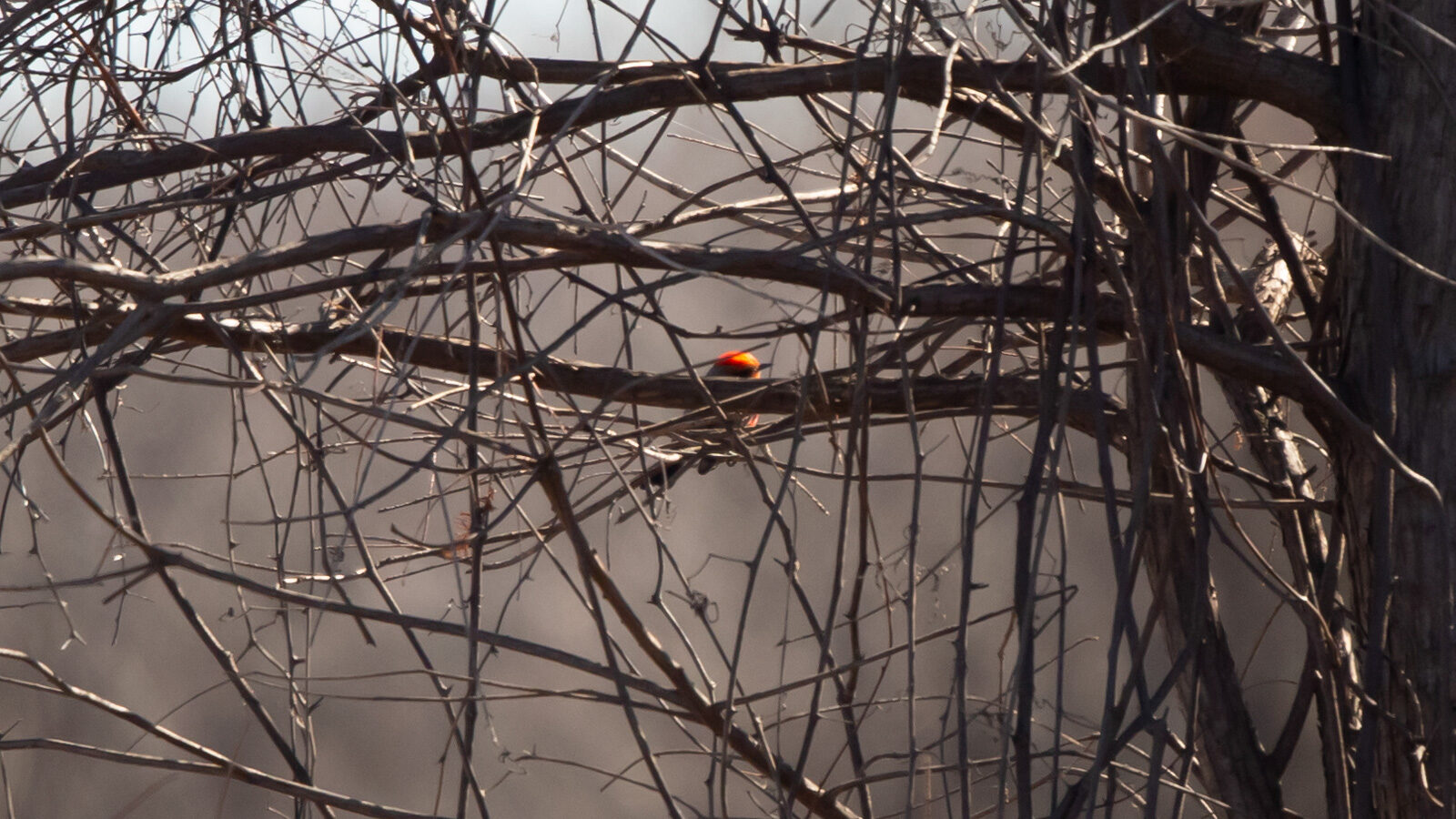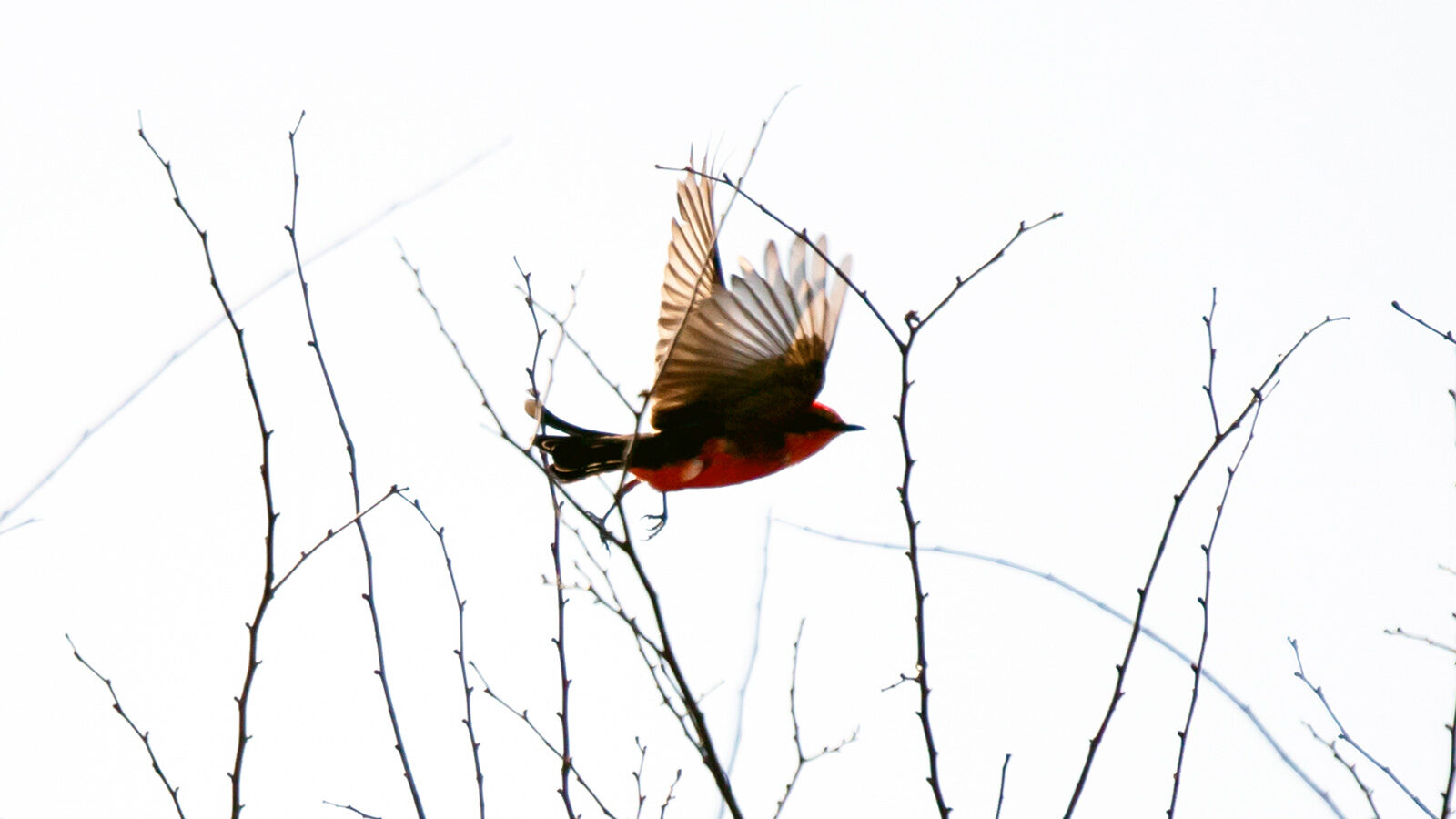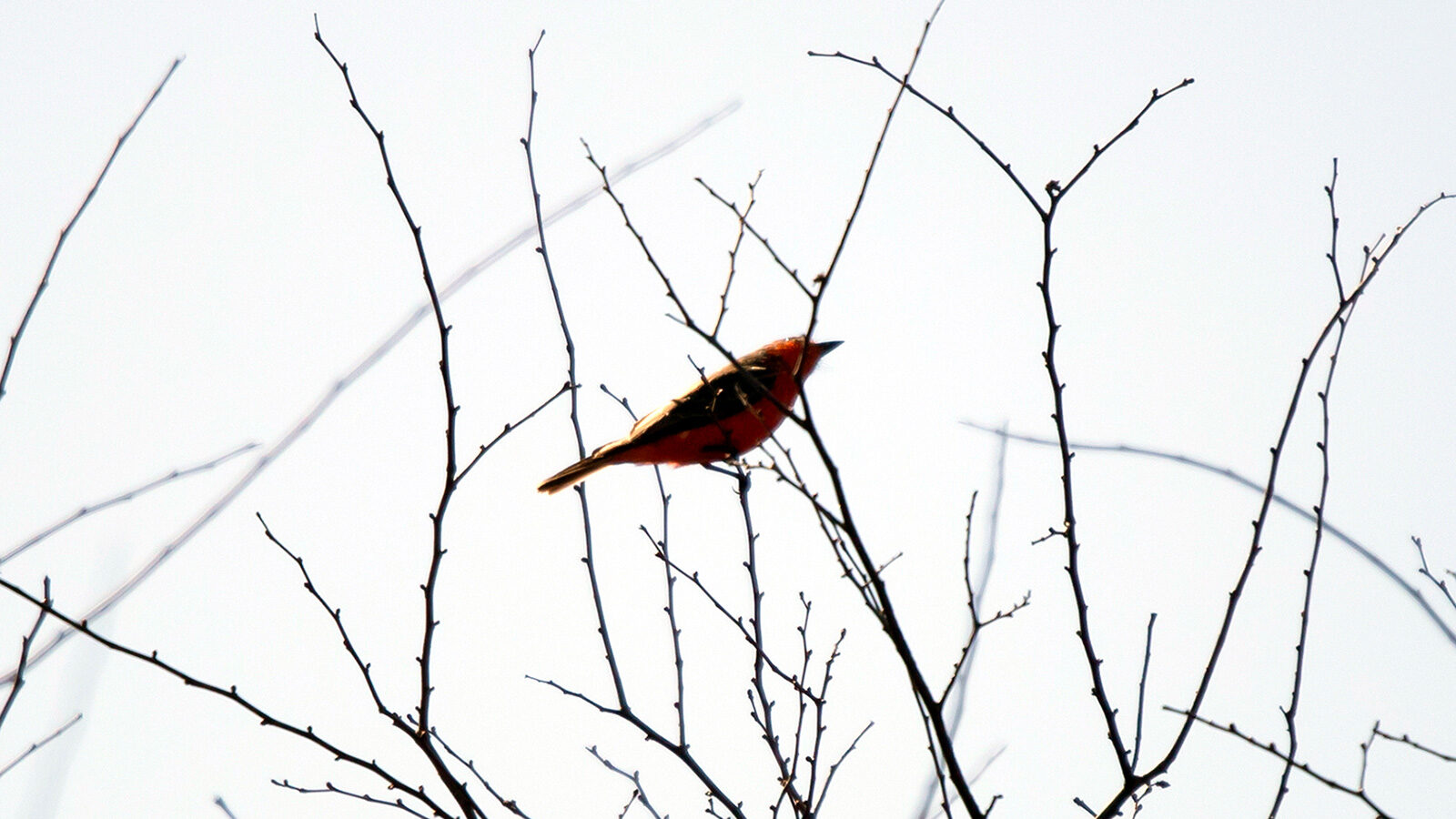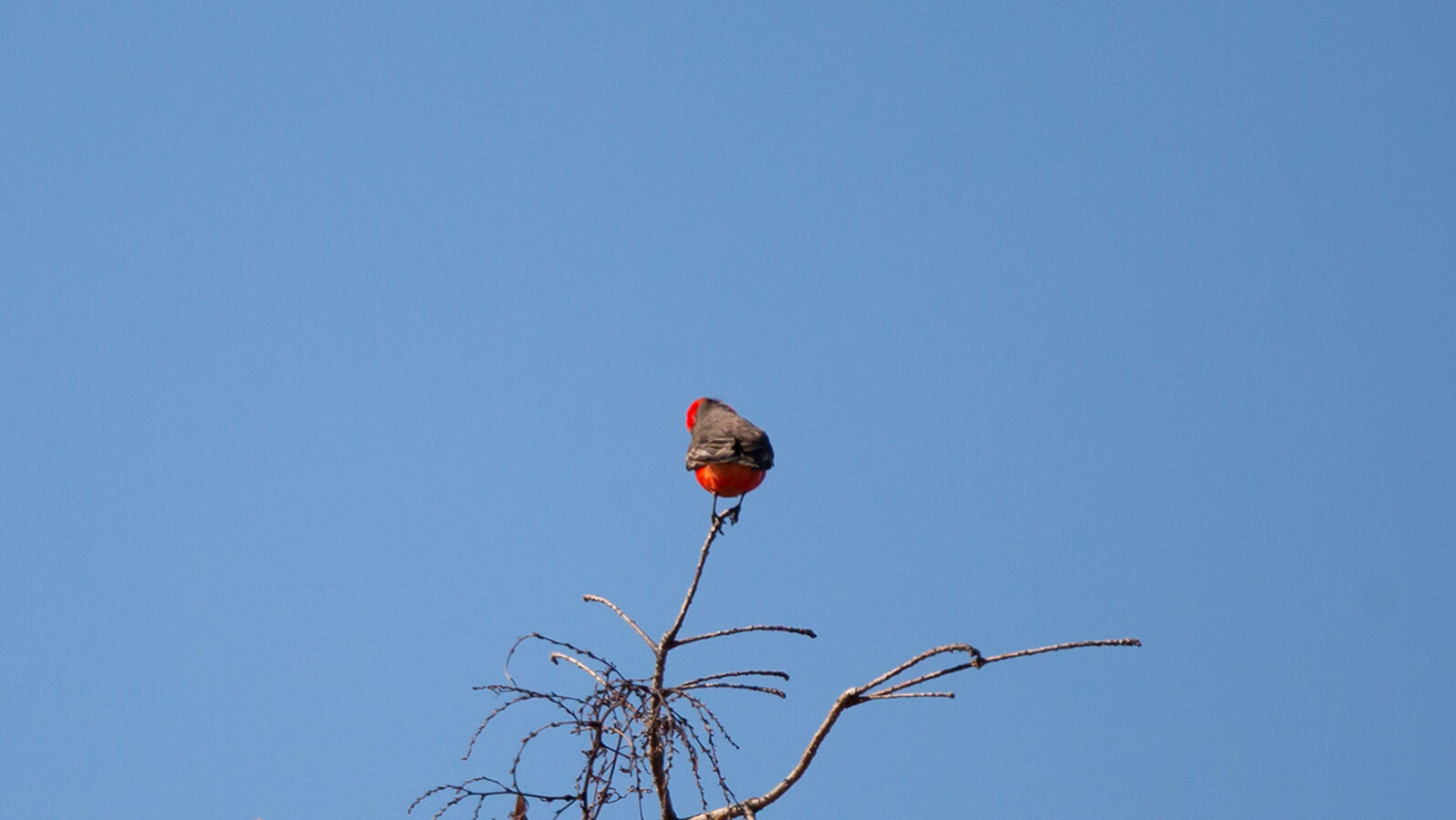
Did you know that male vermilion flycatchers bring female vermilion flycatchers gifts of flashy insects while courting?
Vermilion Flycatchers
at
a Glance

Key Features:
Male vermilion flycatchers are small, bright red birds with black backs and wings. Females are gray-brown birds with white throats and salmon-red on their bellies.
Least Concern - Population Decreasing
Habitat:
Grasslands
nesting habits:
Vermilion flycatchers build nests on leafless branches in trees near streams out of cocoons, grass, lichen, spiderwebs, and twigs.
seasons vermilion flycatchers are active in our area:
Spring, fall
Diet:
Insects
hunting Behavior:
Vermilion flycatchers hunt by ambushing flying insects from perches.
commonly confused with:
Say’s Phoebes and Scarlet Tanagers

Female vermilion flycatchers are often confused with say’s phoebes because both are gray-brown birds with red coloring on their bellies. Female vermilion flycatchers have white throats.

Male vermilion flycatchers are often confused with male scarlet tanagers because both are bright red birds. Male vermilion flycatchers have black backs. Male scarlet tanagers have red backs.